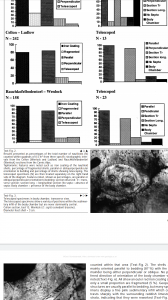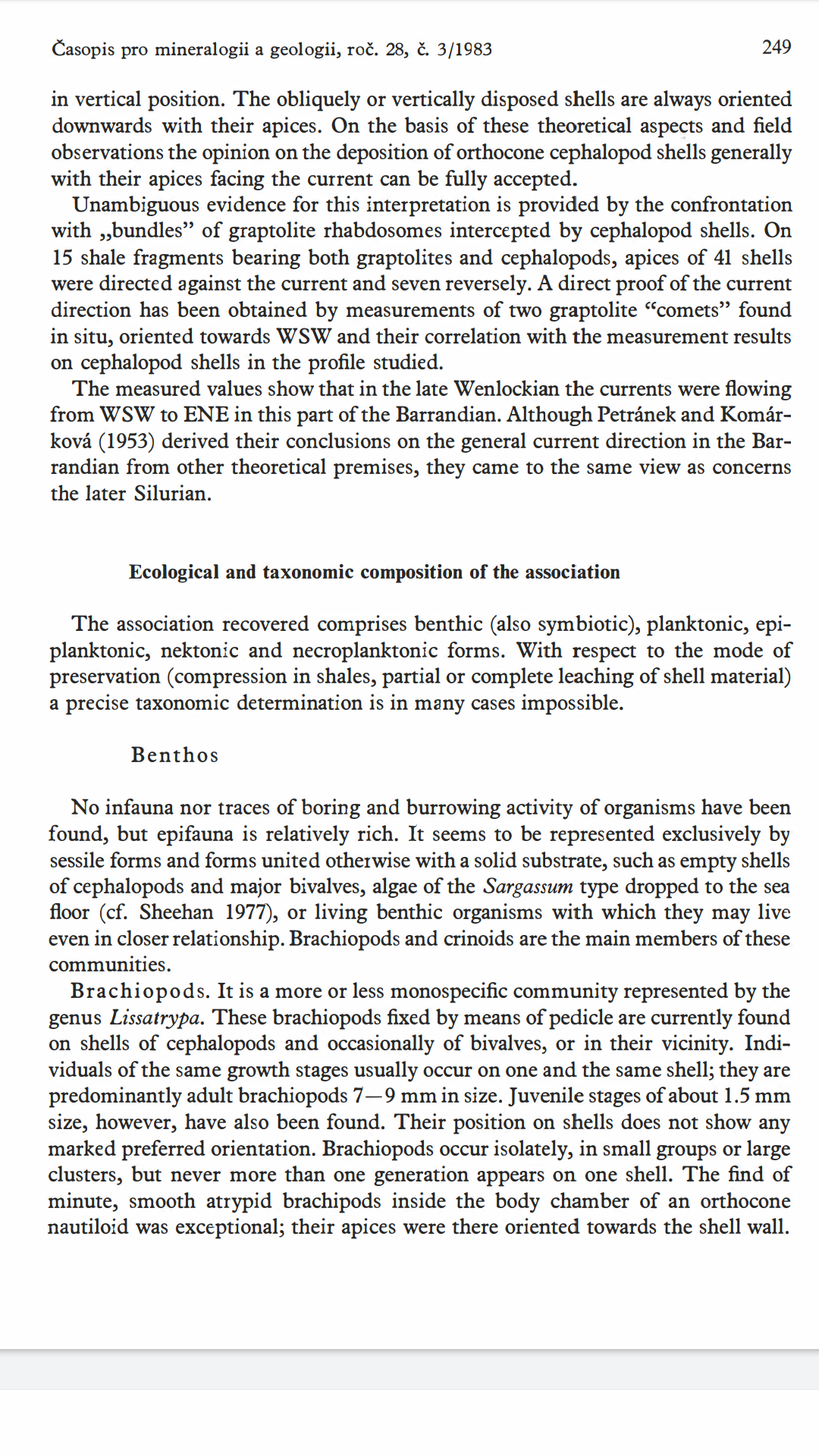Ok, so I'm going to give an example of a cross section image and a bedding plane image.
In the case of the research I was describing, the nautiloids are present silstone-like shales.
And this is in pretty much every paper I've provided you. And, this is what the images show, mudstones and shales and silstones, usually they just look like fine grained black and flat, slate-like rocks. Similar even to the slates that people use as shingles on their roof top.
View attachment 277237
So above is one of the two images of the graptolite comets.
So firstly, what do we see? Well, we don't see large grains, so we know it's not a sandstone. We don't see varying minerals like we would in any igneous rocks. It looks similar to slates that go on a roof top.
What we clearly see in the image is a shale.
One property of shales, is that they are often friable. They often break in sheets. And when I saw often, I mean all the time.
They break into big flat sheets. But they break more readily, along their bedding plane.
A bedding plane is basically just the historic "floor" or "ground".
Whenever you find foot prints for example, the foot prints are on a bedding plane. Bedding planes are typically flat, just as the ground is outside or just as the beach is.
And so, shales, they break along this bedding plane surface, very readily in a flat fashion.
This is just the way it is. So when we go back to the image, what do we see? We see a very flat, almost as flat as paper, shale, being described as a bedding plane in the paper, and in my 1 minute video. This is just what it is.
And not only that, but if you go back to the image, I'll post it again:
View attachment 277237
At the upper right of the image, there is also a piece of the bedding plane above it. It's sticking out toward us. Imagine looking down at the floor. That's what the rock is showing us. It's like we are standing over top of it and it is pointing up at us. And this is what Steve Austin does in his video. He stands over the nautiloid and describes how it's pointing up at them.
But of course, a cone shaped object, I'd it is pointed upwards and downwards (it is vertical), then it's body would be exposed to us, much like a sippy straw that has been cut in half. Which is to say, that it looks like a circle. So let's look at the next image, because it's more apparent.
View attachment 277239
So the graptolites are the stringy looking fossils wrapped around the nautiloid. Graptolites typically look kind of like...like thin strands with teeth-like ridges. If you look very closely in the above image, there are little saw-like sides on the graptolite. Obviously the paper is also describing these as graptolites, but I'm just doing this so that we can both understand what we are looking at.
Ok, so if we look closely, we can see the saw like patter on the sea weed looking fossil.
But it's clearly wrapped around an object is actually slightly elongated in the bottom left direction. Which basically means that it is in fact a vertical object, its sticking up at us because we are looking down at it on a bedding plane.
So when I describe something as perpendicular to bedding. What I am saying is that the nautiloid is almost at a right angle, going straight down into the rock, at a right angle from the bedding plane.
And if we go back to the first image:
View attachment 277237
If you look closely, you can even see the body chambers of the nautiloid.
Here is a cool website that I sometimes use in my travels.
How Do I Know What Kind Of Orthocone?
This website is for fossil enthusiasts and actually you find a lot of good info on it, and there are a lot of experts on it as well.
But I want to pull up one more image.
So I'm the website I just posted, they talk about the siphuncle.
View attachment 277240
And it's king of a tube like structure that runs through the body of the nautiloid.
View attachment 277241
The siphuncle is a tub used to pump fluids from chambers of the nautiloid to adjust it's bouyancy, as per it's definition. But the point is that it appears as a little circle, inside the larger nautiloid body.
So here is one of my prior images that I posted:
View attachment 277243
And if you look closely at "text figure 5" in the image above, you see the outline of the shell and the circular siphuncle inside.
So back to the graptolite comet.
View attachment 277244
Above is a diagram that helps put the photographs into perspective. We have the nautiloid sticking up, in an upwards direction. And the graptolite, much like drifting sea weed, gets caught on the nautiloid in the direction of the current.
View attachment 277239



